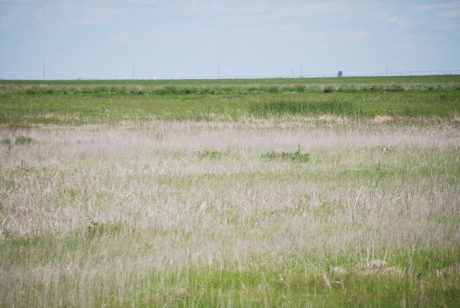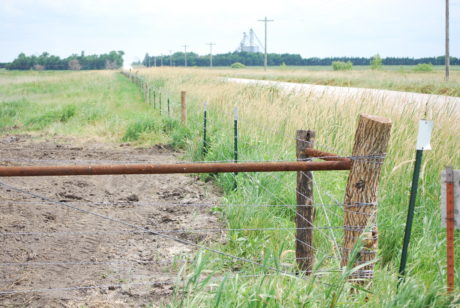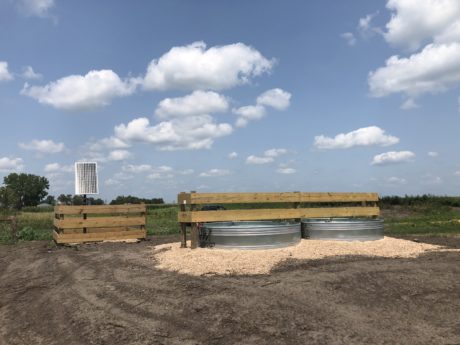Integrated Management on the Reeb WRP

In 2012 Richard “Dick” Reeben rolled 71 acres into the Wetlands Reserve Program(WRP). Dick’s easement is part of a larger wetland basin that also contains Miller’s Pond Waterfowl Production Area and a couple Ducks Unlimited revolving properties. It is important to protect and maintain multiple properties throughout these basins to provide adequate habitat to waterfowl and other wetland-obligate bird species.
Dick and his family have always had an interest in conservation and hunting. They hunt their easement each fall and like to see healthy wildlife populations on the property year-round. They were careful to follow NRCS recommendations for the easement. However, they found that preserving the area was not enough. In order to have the most vibrant and productive wetland, active regular, active management is necessary to enhance the wetland.

Last year, Habitat Easement Specialist noticed that Reed Canary Grass (RCG) was getting more prevalent on the Reeb easement.After securing Dick’s permission, she contacted the Rainwater Basin Joint Venture (RWBJV) to request that the Reeb easement receive an herbicide treatment to reverse the spread of RCG. The property was included in the RWBJV’s annual fall spraying contract.This spring/summer, it was clear that the herbicide treatment was very effective. RCG was reduced by more than 75%. Rather than continue spraying every year or two, we discussed the possibility of constructing a perimeter fence and drilling a livestock watering well with Dick.The 2019 UNL Extension article,Grazing Rainwater Basin Wetlands by Anderson etal., described that grazing in this region is an effective tool for promoting desirable moist soil communities while inhibiting the growth of undesirable plant species. Grazing the easement would also help control cottonwood tree saplings and other undesirable vegetation from encroaching.
The RWBJV facilitated a bidding process to secure fencing and well contractors for the Reeb easement. The wet spring delayed construction a few months, but we are happy to report that a new perimeter fence, solar well, and livestock watering tanks were completed in July 2021.7,870linear feet of5-strand perimeter fence was installed according to NRCS’s wildlife-friendly fencing specifications, which includes a barbless bottom wire and four strands of barbed wire and additional specifications on the height of the top and bottom wire placement.Two gates were installed at strategic locations to facilitate easy movement of cattle.Dick was reimbursed for 85% of the fence/well costs by the RWBJV, Nebraska Game and Parks Commission, and the United States Fish and Wildlife Service. We are very grateful to all of the funding partners whose contributions allow us to complete so many projects like this.

As I write this, Dick is grazing cattle on his easement for the first time. He is starting with a lower stocking rate through the rest of this summer.The RWBJV has included Dick’s property in our annual tree removal contract. All visible cottonwoods/cedars on the easement will be mechanically removed(with stumps treated) in September.Next spring, he will use heavier stocking rates to reduce the RCG, cattails, tree saplings, and other undesirable plant species.Herbicide treatment and tree removal will not need to occur nearly as often on his property now that Dick will be following a NRCS Grazing Management Plan. Not only will we save money on management, but Dick has an additional income-earning opportunity on his easement. This is another example of a project where integrating agriculture into Rainwater Basin wetland management results in a win for both wetlands and private landowners.
















